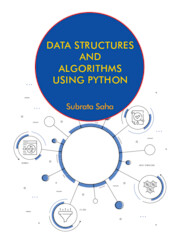Refine search
Actions for selected content:
48572 results in Computer Science
Appendix E - Random Forest
-
- Book:
- Probabilistic Data-Driven Modeling
- Published online:
- 17 May 2025
- Print publication:
- 01 May 2025, pp 408-409
-
- Chapter
- Export citation
2 - Fundamentals of Probability
- from Part I - Preliminaries
-
- Book:
- Probabilistic Data-Driven Modeling
- Published online:
- 17 May 2025
- Print publication:
- 01 May 2025, pp 9-20
-
- Chapter
- Export citation
1 - Introduction
- from Part I - Preliminaries
-
- Book:
- Probabilistic Data-Driven Modeling
- Published online:
- 17 May 2025
- Print publication:
- 01 May 2025, pp 3-8
-
- Chapter
-
- You have access
- Export citation

Data Structures and Algorithms Using Python
-
- Published online:
- 30 April 2025
- Print publication:
- 15 June 2023
-
- Textbook
- Export citation
ROB volume 43 issue 1 Cover and Front matter
-
- Article
-
- You have access
- Export citation
References
-
- Book:
- 1000 Platforms
- Published by:
- Bristol University Press
- Published online:
- 06 September 2025
- Print publication:
- 28 April 2025, pp 166-177
-
- Chapter
- Export citation
Preface
-
- Book:
- 1000 Platforms
- Published by:
- Bristol University Press
- Published online:
- 06 September 2025
- Print publication:
- 28 April 2025, pp xi-xii
-
- Chapter
- Export citation
Enhancing TRIZ through environment-based design methodology supported by a large language model
-
- Article
-
- You have access
- Open access
- HTML
- Export citation
Tolerancing in product design – a holistic description scheme
-
- Journal:
- Design Science / Volume 11 / 2025
- Published online by Cambridge University Press:
- 28 April 2025, e11
-
- Article
-
- You have access
- Open access
- HTML
- Export citation
Interlude II - Platform Urbanites: The Doge Pesaro
-
- Book:
- 1000 Platforms
- Published by:
- Bristol University Press
- Published online:
- 06 September 2025
- Print publication:
- 28 April 2025, pp 39-41
-
- Chapter
- Export citation
Frontmatter
-
- Book:
- 1000 Platforms
- Published by:
- Bristol University Press
- Published online:
- 06 September 2025
- Print publication:
- 28 April 2025, pp i-iv
-
- Chapter
- Export citation
2 - Edging: From Terminals to Interfaces
-
- Book:
- 1000 Platforms
- Published by:
- Bristol University Press
- Published online:
- 06 September 2025
- Print publication:
- 28 April 2025, pp 20-38
-
- Chapter
- Export citation
8 - Implications
-
- Book:
- 1000 Platforms
- Published by:
- Bristol University Press
- Published online:
- 06 September 2025
- Print publication:
- 28 April 2025, pp 158-165
-
- Chapter
- Export citation
Interlude III - Container Figures
-
- Book:
- 1000 Platforms
- Published by:
- Bristol University Press
- Published online:
- 06 September 2025
- Print publication:
- 28 April 2025, pp 68-70
-
- Chapter
- Export citation
List of Figures and Tables
-
- Book:
- 1000 Platforms
- Published by:
- Bristol University Press
- Published online:
- 06 September 2025
- Print publication:
- 28 April 2025, pp x-x
-
- Chapter
- Export citation
Dedication
-
- Book:
- 1000 Platforms
- Published by:
- Bristol University Press
- Published online:
- 06 September 2025
- Print publication:
- 28 April 2025, pp v-vi
-
- Chapter
- Export citation
Colouring random subgraphs
- Part of
-
- Journal:
- Combinatorics, Probability and Computing / Volume 34 / Issue 4 / July 2025
- Published online by Cambridge University Press:
- 28 April 2025, pp. 585-595
-
- Article
- Export citation
5 - Embedding and Embodying
-
- Book:
- 1000 Platforms
- Published by:
- Bristol University Press
- Published online:
- 06 September 2025
- Print publication:
- 28 April 2025, pp 92-110
-
- Chapter
- Export citation
Interlude I - Life along Edges: Coastlines and Reefs
-
- Book:
- 1000 Platforms
- Published by:
- Bristol University Press
- Published online:
- 06 September 2025
- Print publication:
- 28 April 2025, pp 18-19
-
- Chapter
- Export citation
Series Editors’ Preface
-
-
- Book:
- 1000 Platforms
- Published by:
- Bristol University Press
- Published online:
- 06 September 2025
- Print publication:
- 28 April 2025, pp viii-ix
-
- Chapter
- Export citation









